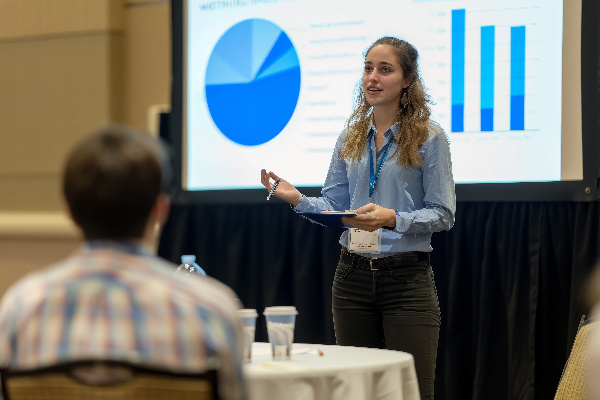Published on
Gaining Students’ Partnership: Serving Them with Dignity

The paradox of the institution of higher education is that externally it is calm, steady and unshakable to a fault, whereas internally it is a hive of vigorous intellectual debate, perpetual reflection, questioning, experimentation and subsequent change and adaptation. Both facets are intrinsic to its essence and its character. The external presentation of steadiness stems from its enduring aspirational vision of being the driver of human development, intellectual exploration and social progress. This long-term vision is relatively immune to fluctuations and trends, and it shields the institution from undue political and special interest influences. The internal perpetual entropy is also an intrinsic quality that captures its values of inquiry and its scholarly membership.
Through expertise and training, faculty contribute to progress and development by questioning the status quo, challenging long-held assumptions and constantly expanding and revising mental models, social values, pervading theories, scientific knowledge and technological tools. This paradoxical configuration of stability and dynamism contextualizes the permanent tension between the external narrative of higher education—slow to change and catch up with specific changes and societal demands—and the internal reality of a vibrant institution with scholarly and experimental activities addressing broad and encompassing themes and questions. In the words of Martha Nussbaum,1 “The real story of higher education in America is the story of the daily struggles of … men and women [the faculty] to reason well about urgent questions and to engage the hearts and minds of their students in that search.”
Given the inherent paradox, it may be tempting to ignore and dismiss the external narrative as par for the course. Such a stand would be justified during periods of relative stability and slow, incremental evolutions of political, social and economic realities. In these steady state periods, the gap between the external narrative of stability and the internal narrative of dynamism is cultural and temporary. Higher education has indeed been evolving all along; it is equipped with the proper organizational and intellectual infrastructure to evolve during periods of stability. External observers cannot necessarily fully understand or see this evolution in real time, yet it has been happening based on tested protocols, deliberate timelines and sound foundations.
It is also important to recognize that, during times of major disruptions like the present, it is legitimate to ask whether the nature, pace and complexity of the changes required exceed the internal human and organizational capacity for adaptation. During such times, we have a collective duty to examine and question not just what we do and how we do it but some foundational premises deeply embedded in our systems that may be in conflict with the changes required. As systems thinker Donella Meadows2 points out, stable systems tend to perform well based on the goals, rules and assumptions for which they were designed. When there is a gap between the desired behavior and the observed behavior, it may be time to re-examine the accompanying goals, rules and assumptions.
The theme of student experience this issue addresses reflects a general realization that there is a significant and consequential gap between what students need and expect from their colleges and universities and what they have been getting from them. This gap has emerged most prominently in the last few years as students’ needs, expectations and predispositions have changed significantly.
Changes in Students’ Needs
The rapid transition from in-person learning to technology-mediated learning that took place during the COVID lockdown was an admirable exploit from everyone in the K-20 system—educators, students, parents and technology professionals. As successful as it was, the transition resulted in different academic, social and emotional outcomes for a whole generation of learners. Extensive data3 shows a significant drop in math and reading levels for students of all ages. More anecdotal evidence suggests that loss of understanding in traditional academic subjects goes along with a gain in other skills such as resilience, online resourcefulness and connection to online communities that we are not directly tracking or explicitly integrating into our curricula and pedagogies. At the emotional level, we saw an increase in demand for mental health and well-being support. On both academic and emotional states, COVID has not impacted everyone equally but magnified existing inequity. The range of available resources for students, their parents, their schools and their communities either mitigated or aggravated this impact. COVID has taken mostly from those who had the least and needed the most, further expanding pre-existing socioeconomic inequities.
Changes in Students’ Expectations
Partly as a consequence of the transition to technology-mediated learning and partly because of the proliferation of info-tainment and online business, students are now used to different and increasingly sophisticated interactions with services. Technology-mediated services are 24/7, with no time delay and very few, if any, irrevocable decisions. There is no one-size-fits-all; customers can pick and choose their content, schedule, pace and payment plan. They can customize interactions and only pay for services they need when they need them. Some of these characteristics are hard or impossible to implement at large scale in a face-to-face educational environment. In any case, doing so requires some redesign and rethinking.
Changes in Students’ Needs, Expectations and Predispositions
The third facet of the gap reflects the climate of major social, political and environmental challenges in which incoming students have grown up. Taken individually, each of these challenges is of a disruptive nature and magnitude: global warming with no timely solutions in sight, the melting of our traditional epistemological systems due to political polarization, deep fakes, the predominance of algorithm-based automated media production and consumption, and the exposition of the deeply entrenched racial and socioeconomic injustices in our societies. Put together, these three major global challenges have deeply impacted the incoming generation of students. They are idealistic, resilient, connected and independent. And they are anxious, worried and deeply disappointed in the current state of the world, and in the generations that created it.
While students hunger for institutions they can trust, ones that will guide and support them in sensemaking, in engaging in intelligent debate and in taking leadership to address all these issues, they are also angry and disillusioned at these institutions’ willingness or ability to do so. Students come with a predisposition of skepticism and suspicion.
Yuval Levin, in his book Time to Build,4 describes young people’s general disappointment in all our traditional institutions: “Young Americans have grown bombarded with examples of institutional failure… A country repeatedly disappointing itself is the only America they have known, and so, they take it as a norm, not an exception. They are not happy about it, but their desire to overcome it expresses itself in various forms of rejection and dissent, rather than in recommitment to the potential of our society and institutions.” We have students who need us more than ever in an environment where we and they are stretched to the limit, students who expect from us more than what we have been delivering, students who are angry and disillusioned about our ability and goodwill to address the issues at hand.
What are we doing to address their concerns, and what else should we do? I am confident that I speak for most of our sister institutions when I say that we are taking them very seriously. We are working on several fronts at different levels of granularity and with different time scales in mind. There are several areas of progression and success; other areas will take longer and will require our patience, perseverance and collective wisdom and collaboration.
The areas in which we are collectively progressing and succeeding fall in our traditional organizational and intellectual toolboxes. I will list a few that we have invested in at GVSU as an illustrative example. They have been effective in helping us move the needle in a positive direction in terms of student retention, well-being, sense of belonging and academic success and experience.
- Expanding, integrating and coordinating all student services: Our institutions are becoming more complex and our students more diverse. Every student needs at least one go-to person who helps them navigate the university system with maximal impact and success, someone who becomes their partner until they graduate.
- Critically reviewing curricula to allow for multiple customized entry points but common academic and developmental outcomes: We must balance choice (empowering the students) and constraints (guaranteeing the right exposure and the right experiences).
- Critically reviewing our policies and procedures, removing barriers and burdens for students whenever possible, thereby prioritizing students’ experience over bureaucratic efficiency.
- Professionally supporting and developing faculty and staff by encouraging resource sharing and best practices while supporting their well-being.
- Critically examining some seemingly innocuous systems that embed many inequities and inefficiencies. For example, course scheduling is such a hard process that we often change it incrementally from year to year without critical analysis and with little insight from many other data and intelligence sources.
Work on the items above and many more bring to life Nussbaum’s statement about the level of energy and commitment faculty and staff invest in doing this very hard but very rewarding work—work to which they chose to commit their lives. Is this sufficient to address the climate of anxiety, distrust and lack of faith some students experience? Trust takes longer to rebuild. It takes more than hard work and time; it takes genuine reflection and partnership with students, so they can go from feeling “left behind, disrespected, robbed of dignity and hope”5 to a place of partnership, collective action and hope.
At GVSU, we have been engaging with students who shared their anxieties and sentiments of disappointment with us. They want assurance that we care not only about the outcomes of their studies but about the integrity of their experience. They want an environment that honors them and their dignity. This seemingly simple demand touches higher education’s core mission and purpose—human development. Could it be possible that through the decades, higher education has drifted away from this mission and prioritized, as the measurable outcome of human development, economic betterment and career success over human flourishing and dignity?6
Asking this question is akin to what Meadows refers to when she invites us to re-examine “the mindset or paradigm out of which the system—its goals, structure, rules, delays, parameters—arises.” Addressing this question with our students as partners is also consistent with Levin’s recommendation to “take up hard questions about the health and even the very purpose of the institutions of our society.”
As we have all been working in the last few years at improving our students’ experiences and narrowing the gap between what they need and expect from us and what we have traditionally offered, this expectation gap might also be symptomatic of a bigger, broader issue of misalignment. It may be our call to action to revisit our core mission and ensure it captures and expresses with clarity the aspiration of human development and social justice in light of modern broad understanding of these values. This is our opportunity to partner with current and future generations to build an institution they can trust and that is fit for the future they face.
References
1. Nussbaum, Martha C. Cultivating Humanity: A Classical Defense of Reform in Liberal Education Harvard University Press
2. Donella Meadows Leverage Points: points to intervene in a system
3. See e.g. NCES data for the drop in ACT scores. For global results, see WEF report on drop in PISA scores
4. Yuval Levin, A Time to Build: From Family and Community to Congress and the Campus, how Recommitting to our Institutions can Revive the American Dream. Basic Books, 2020.
5. Yuval Levin, A Time to Build: From Family and Community to Congress and the Campus, how Recommitting to our Institutions can Revive the American Dream. Basic Books, 2020.
6. Paolo G. Carozza, & Clemens Sedmak (eds) The Practice of Human Development & Dignity, University of Notre Dame Press, 2020.



